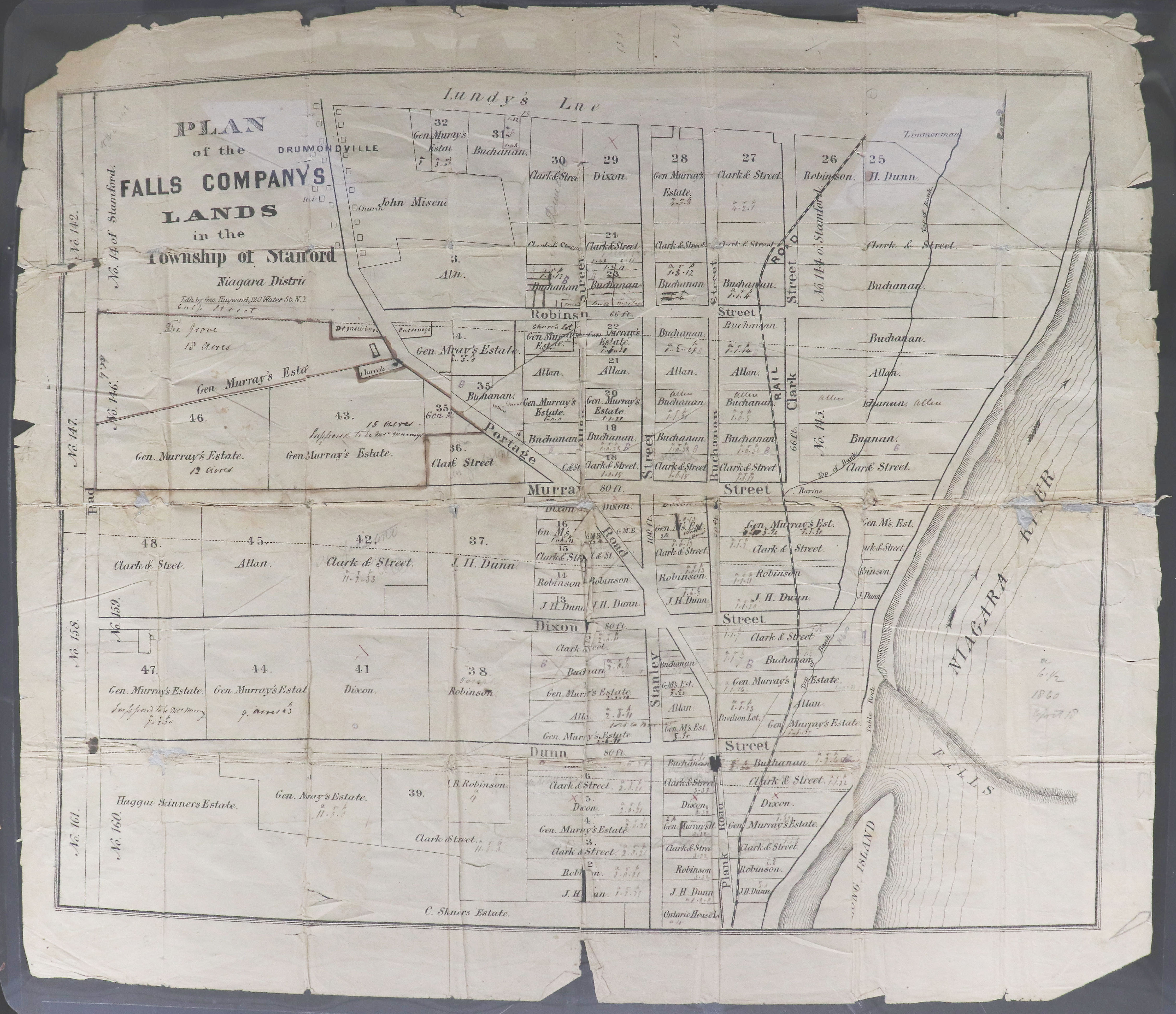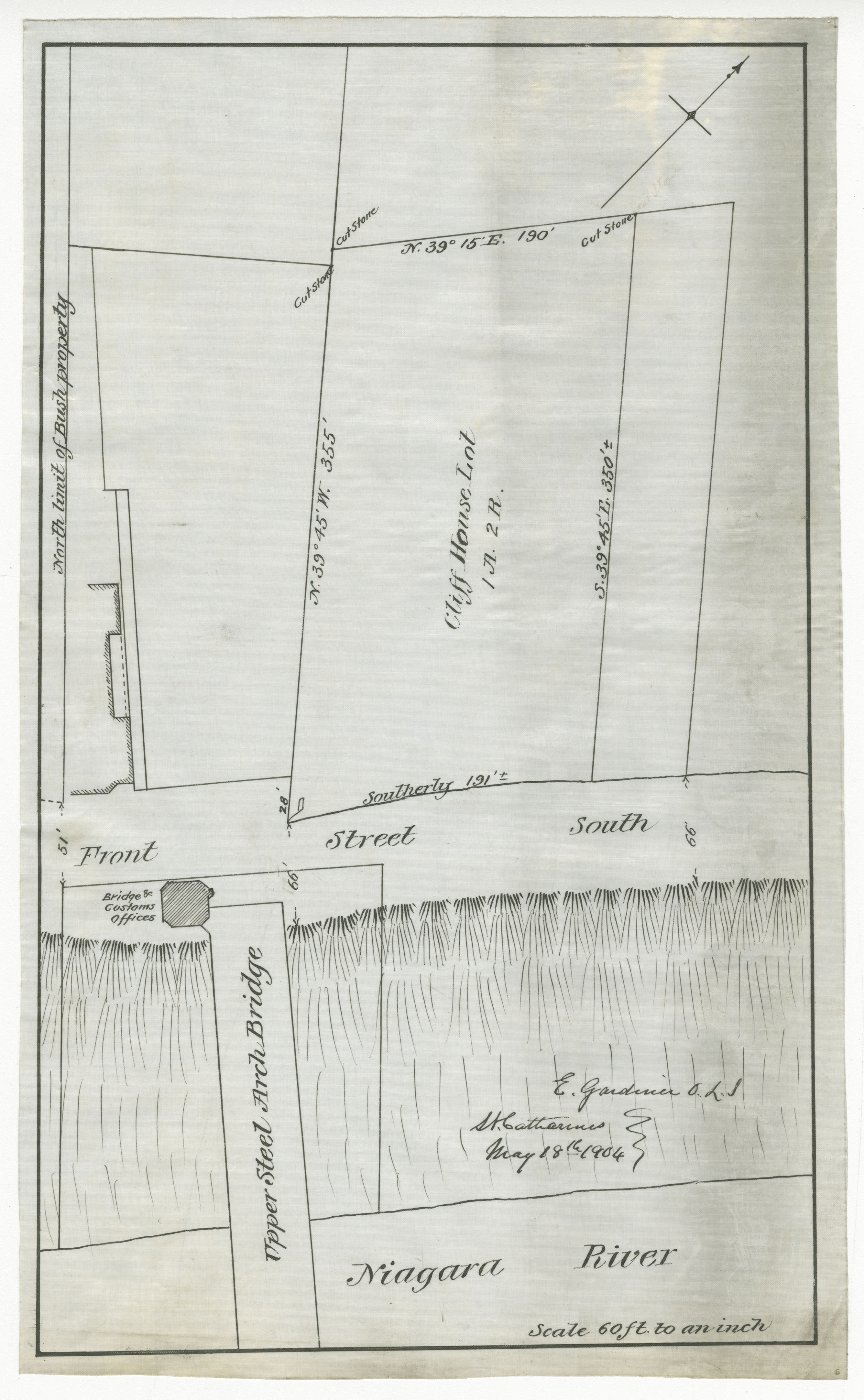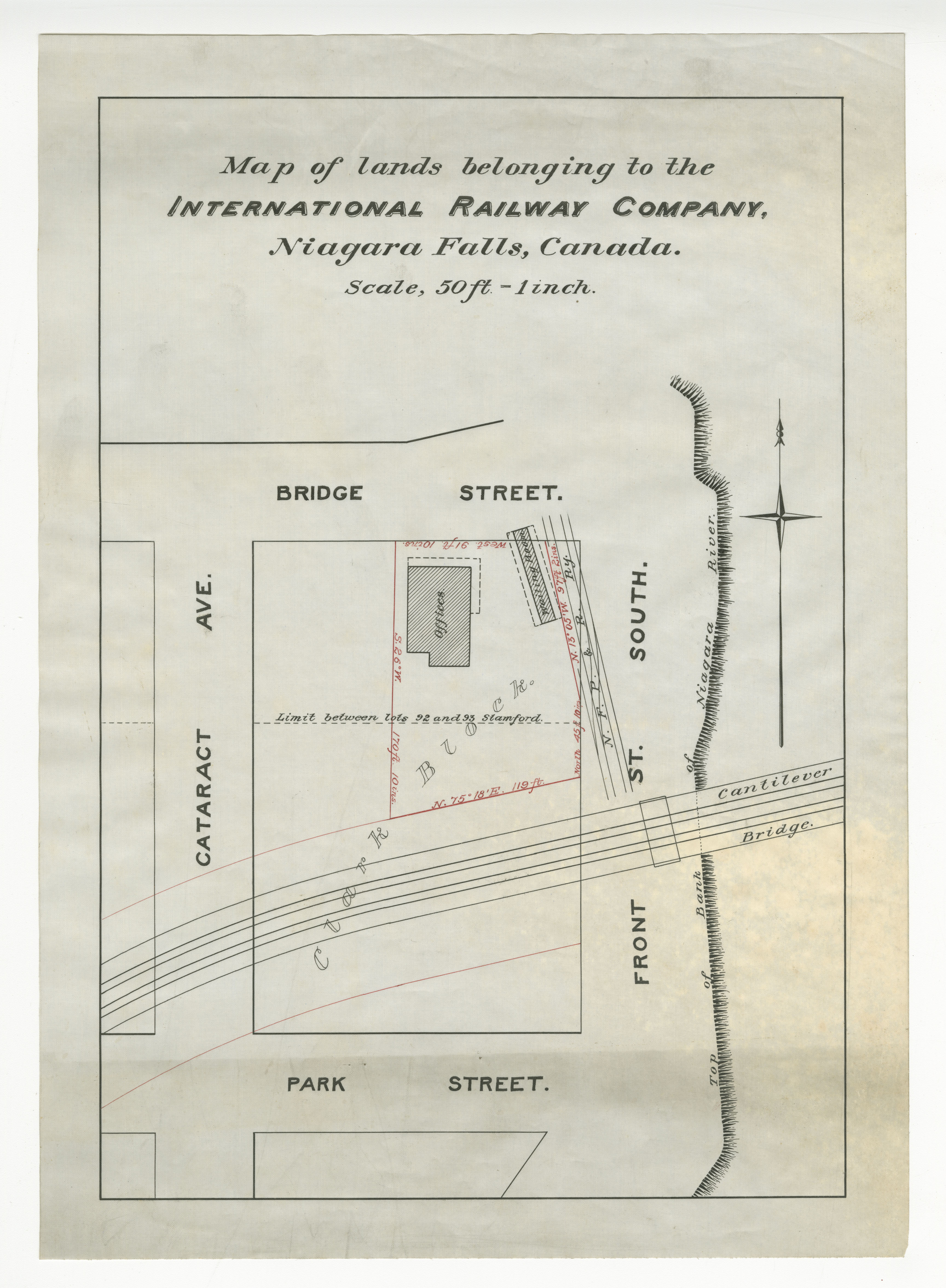City of Niagara Falls Plans
A collection of plans, surveys and maps of the City of Niagara Falls, Ontario.
Contents: About the Collection | About the About Page | Tech
About the Collection
The collection consists of 41 plans, surveys and maps of the City of Niagara Falls, Ontario, beginning in 1832 until 1928. The plans show some of the various developments in Niagara Falls during a time of significant growth including subdivisions, railways, and bridges.
City of the Falls Company
Some of the plans were created for the City of the Falls Company. The Company was owned by a group of successful and influential men in Upper Canada who proposed a real estate venture on land near the Falls around 1832. The Company’s shareholders included James Buchanan, the Honourable William Allan, the Honourable John Henry Dunn, Thomas Dixon, Lieutenant General John Murray, James Robinson, Samuel Street Jr., and Thomas Clark. They envisioned a residential development that would be designed to help preserve the natural beauty of the area. However, the company did not have sufficient funds to see the project through and the proposed development never materialized. Although the project ultimately failed, the streets in the area still bear the names of the project’s shareholders.
Bridges over the Gorge
The first bridge spanning the Niagara Gorge was opened in 1848. This suspension bridge was designed for carriages and pedestrians, but was rebuilt a few years later to accommodate railway traffic. The bridge was re-designed to have two levels, the upper level for railway traffic and the lower level for pedestrians and carriages. The new bridge was opened in 1855 and was known as the Whirlpool Suspension Bridge. With the success of the Whirlpool Suspension Bridge, many local businesses wanted another bridge to be built closer to the Falls. Construction for this bridge began in 1867, with the official opening in 1869. It was known as the Falls View Suspension Bridge.
With the increasing use of electric railways, it became apparent that the suspension bridge was not adequate to support the increased weight and a new bridge would need to be built. Construction of a new steel arch bridge began in 1897, and was opened to traffic in June 1898. It consisted of one level and could accommodate electric trolleys, carriages, and pedestrians. This bridge was known as the Falls View Bridge and Honeymoon Bridge. It remained in operation until January, 1938, when it collapsed from the pressure of ice jams on the bridge’s supporting abutments. It was replaced with the Rainbow Bridge, which remains in use.
Railways
With the construction of bridges across the Niagara Gorge, new opportunities for railway development became possible. Around 1848, businessman Samuel Zimmerman purchased several hundred acres of land on the Canadian side of the suspension bridge, located at the site of the present-day Whirlpool Bridge. He proceeded to lay out streets and plots, as well as constructing commercial buildings. This community was known as the Village of Elgin and became the Canadian terminus of the railway when the new suspension bridge opened in 1855. Elgin merged with the Village of Clifton in 1856 and became known as the Town of Clifton. Over the years, Clifton evolved into a railway hub, becoming the eastern terminus of the Great Western Railway and connecting to the American railway network via the suspension bridge.
For full details of creating your own collection site, visit CollectionBuilder Documentation!
Technical Credits - CollectionBuilder
This digital collection is built with CollectionBuilder, an open source framework for creating digital collection and exhibit websites that is developed by faculty librarians at the University of Idaho Library following the Lib-Static methodology.
The site started from the CollectionBuilder-GH template which utilizes the static website generator Jekyll and GitHub Pages to build and host digital collections and exhibits.


